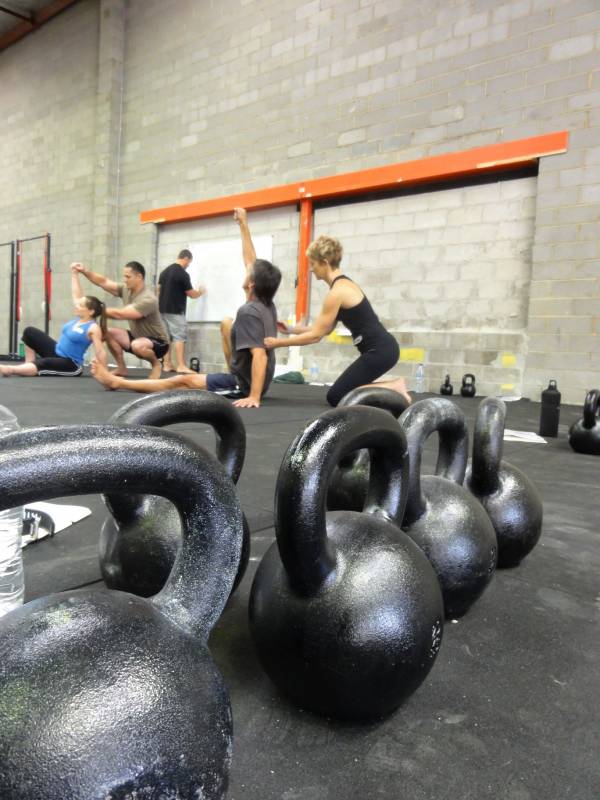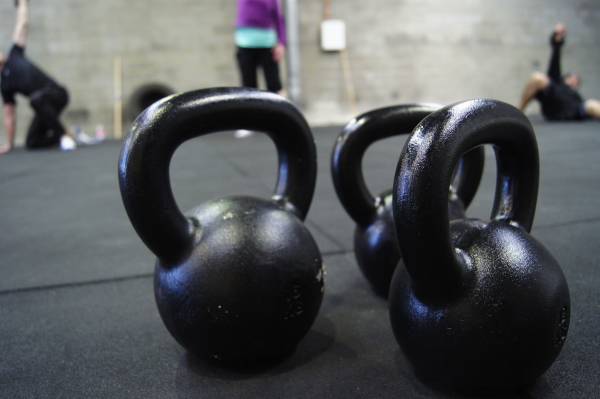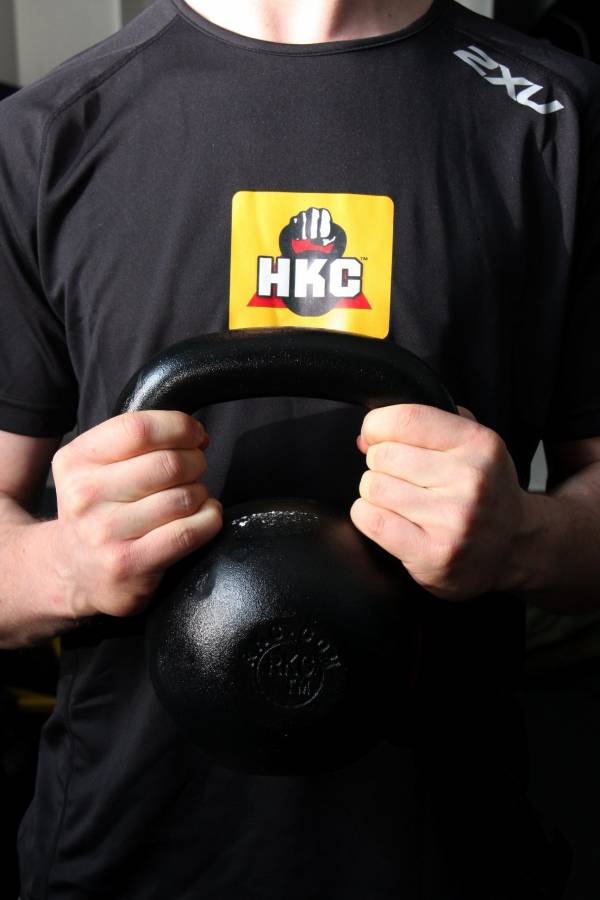“Long before the invention of the plate loaded barbells and dumbbells, history spoke of men of seemingly superhuman strength. On display at the Archaeological Museum of Olympia in Greece is a 316lb sandstone, dating back to early 600BC, with the inscription “Bybon son of Phola, has lifted me over his head with one hand.” – Kenneth Jay, Perfecting the Press, Dragon Door Publications.
Famous strongmen of ages past did not ask each other how big their bench press was, or even how much they squatted. Racks and benches are a relatively modern invention, first surfacing only in the last hundred years.
Looking at pictures of famous strongmen such as Eugen Sandow and Arthur Saxon it’s clear to see that these pre-steroid strength trainers were not lacking for muscle. Favoring lifts such as the overhead press and the two-hands-anyhow these men still managed to develop incredible amounts of strength. Saxon’s 370lb bent press and 448lb two-hands-anyhow are testament to the incredible strength these men developed.
It may appear these two lifts received the lion’s share of recognition but Sig Klein, American strength legend, wrote, “The one-arm get-up is a general test of strength, which had considerable appeal to most strongmen of yesteryear…It has always made a hit with the theatrical public, for it was obvious to them that magnificent strength was being displayed when an athlete did a one-arm get-up with a heavy bell.”
Before the invention of the bench, or Zumba, or WODs the focus was on quality of movement. Early Turner halls in America brought with them the German tradition of the Turnvereine. One of the key concepts was that of beautiful movement, of Kalos Sthenos, championed more recently by Gray Cook and Brett Jones.
A few years ago these two masters of movement got together and created a product called Kettlebells From the Ground Up. Previous to then, while I had been aware of the get up, and had been training prior to attending the RKC, I had never really understood exactly why I should be doing get ups. Something with me just clicks into place when I do them and they make a lot of other things work better.
Here’s a short list of everything that we can get from within a single get up:
- Single leg hip stability during the initial roll to press and during the bridge.
- Both closed and open chain shoulder stability.
- Shoulder mobility.
- Thoracic extension and rotation.
- Hip and leg mobility and active flexibility.
- Stability in two different leg patterns – lunge stance as well as squat stance.
- Both rotary and linear stability.
- The ability to link movement created in our extremities to the rest of our body.
There’s actually a lot more, but I want to talk more about the last point first. When we create movement, we push into the ground – it’s basic physics. The harder we push the ground, the harder it pushes us back. If we make ourselves solid through the midsection we can turn that force through the body into something like throwing or punching in the upper extremities. But it all starts at the ground and is linked through our midsection.
The get up allows us to learn how to create this linkage between lower and upper body, all the while steering the kettlebell through a variety of planes and angles. Done well it is filled with aesthetic quality, with beautiful movement.
So what are the benefits of the get up, and how can we use it to benefit us?
Warm Up and Assessment
Firstly, the get up can be used as a great warm up and self-assessment tool. If you begin your session with get ups for even ten minutes you’ll have a good idea of whether or not you’ve really got it in you to train hard that day. If your  movement is crisp and you are performing the movement easily with your goal bell for that session then rip it up. If, however, you find yourself struggling and wobbling all over the place like a baby giraffe, maybe even dropping the bell, then today is not the day to go heavy.
movement is crisp and you are performing the movement easily with your goal bell for that session then rip it up. If, however, you find yourself struggling and wobbling all over the place like a baby giraffe, maybe even dropping the bell, then today is not the day to go heavy.
Likewise, the get up can be used to highlight if you need to spend extra time on movement or flexibility exercises before getting into your session. Struggling to maintain a tall spine in the seated position can be a clue that you will potentially hurt yourself if snatching or pressing today, unless you can iron out those kinks now.
I use the get up as an assessment of clients – I can see by where they put their feet if they have the faith in their hip stability or want to use their quads. I can see if they lack dorsiflexion or the ability to brace through their core by seeing if they bend their arm as they stand up. It shows me weakness and tightness in the hips. In short – I can watch you do a get up and know, in one rep each side, what you’re struggling with today and what we need to do to maximize your training for the day.
Strength Training
Secondly, we can use the get up as part of our strength workout. There’s no difference to me between choosing to do a get up heavy or a bent press or double press heavy. At the time I went through the Certified Kettlebell Functional Movement Specialist (CK FMS) course, I was the only person in the room to score a three out of three for rotary stability, out of 104 people. In the lead up to the course I would begin all my sessions with 40kg get ups for about fifteen minutes and performed no additional core work.
The benefits of heavy get ups are bulletproof shoulders and massive confidence in having big weights overhead. Master RKC Brett Jones frequently mentions that for people who are struggling to get their goal bell overhead heading into the RKCII certification, they need to be doing get ups with the bell one size heavier in practice. When the body is confident you can stabilize the load overhead safely it will allow you to get it there. However, if the body does not believe you have the ability to do so safely, it will shut you down. Ever tried to press a heavy bell and couldn’t budge it from the rack? Try some goal bell plus one get ups and watch that change quickly.
 We can also use the get up to get in some extra time under tension and eccentric work with our goal bell. Let’s say you’ve pressed the 36kg bell and are struggling to get to terms with the 40kg. Because you are stronger once your arm is locked out than pressing, you should be able to do a get up with this bell already. However, once you have reached the top of the movement, slowly perform an eccentric press aiming to take five seconds. Once the bell is racked, put it down and start again. This extra time under tension and eccentric work is a great way to give you more time with your goal bell.
We can also use the get up to get in some extra time under tension and eccentric work with our goal bell. Let’s say you’ve pressed the 36kg bell and are struggling to get to terms with the 40kg. Because you are stronger once your arm is locked out than pressing, you should be able to do a get up with this bell already. However, once you have reached the top of the movement, slowly perform an eccentric press aiming to take five seconds. Once the bell is racked, put it down and start again. This extra time under tension and eccentric work is a great way to give you more time with your goal bell.
Reinforce Corrective Work
The get up can also be used, as Brett Jones says, as a “save document” function. If you perform some corrective work, then some heavy get ups, you tie it all together. Load creates motor patterns and with the get up involving so many different muscles and movements, it reinforces the corrective work just done.
Why I Love the Get Up
And finally, for me personally, the get up is pretty much how I found the RKC system. I had been battling a shoulder injury in 2006. I had looked into everything I could find and started to see more and more suggestions about kettlebells and how their lopsided nature could help to strengthen the stabilizers of my shoulder. I can still remember my first shaky get up on my front lawn with a 16kg bell and wondering how on earth anyone could ever use more than that. Now, most of my female clients warm up with that and even my seventy-year old mother can do get ups with a 12kg!
 But my shoulder problems were far worse than just needing some extra strength and stability and eventually, in late 2007, I had reconstructive surgery. Once I was allowed go back to strength training I was told I would never be able to lift anything heavy overhead again. So I began with some light overhead walks up and down my driveway. Those soon progressed to overhead lunge walks and once I could do them I knew I could do get ups again.
But my shoulder problems were far worse than just needing some extra strength and stability and eventually, in late 2007, I had reconstructive surgery. Once I was allowed go back to strength training I was told I would never be able to lift anything heavy overhead again. So I began with some light overhead walks up and down my driveway. Those soon progressed to overhead lunge walks and once I could do them I knew I could do get ups again.
Over the next few months, by attacking get ups hard and working slowly at pressing again with a much lighter bell – I was performing get ups with a 40kg, my heaviest bell at the time, but only pressing a 24kg – I quickly regained all of my strength. The surgeon was amazed at how much progress I had made so quickly and it encouraged me to start snatching and book the RKC certification. That trip started what has become a pretty strong love affair for me, and I count many within our community as my closest friends. I’ve also found two fantastic mentors in Pavel and John du Cane. And really, it’s all because of the get up.
So add them into your training – use them as a warm up and self-assessment, a strength exercise, or to “save document” and hold onto all the corrective work you’ve done. But add them in regardless of how. Your body will thank you for it in the years to come.






